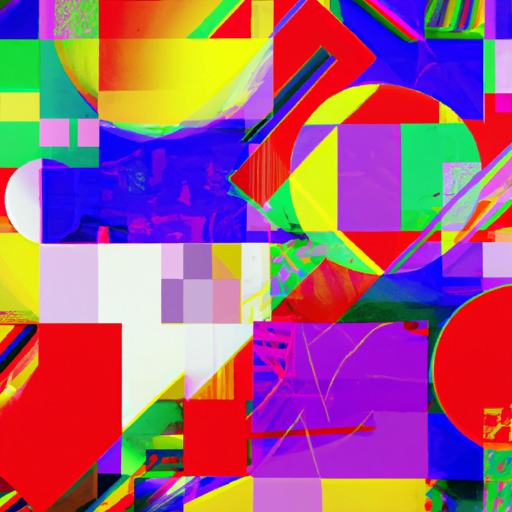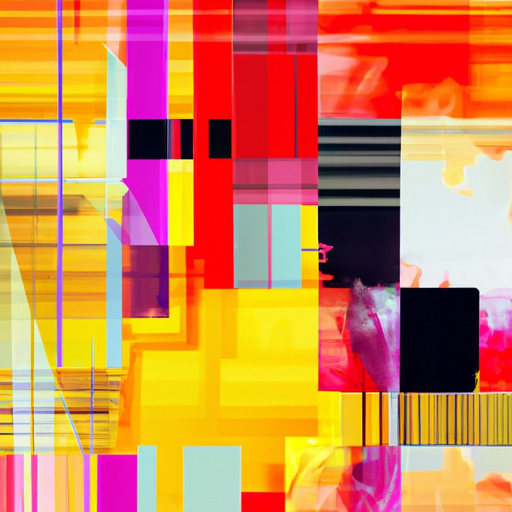
-
Table of Contents
Designing AI-Generated Patterns for Textiles and Surfaces

Artificial Intelligence (AI) has revolutionized various industries, and the world of design is no exception. Designers are now leveraging AI to create intricate and captivating patterns for textiles and surfaces. This article explores the potential of AI in pattern design, its benefits, challenges, and the future of AI-generated patterns.
The Rise of AI in Pattern Design
AI has opened up new possibilities for designers by automating and enhancing the pattern design process. Traditionally, designers would spend hours manually creating patterns, experimenting with colors, shapes, and textures. With AI, designers can now generate countless unique patterns in a fraction of the time.
AI algorithms can analyze vast amounts of data, including existing patterns, color palettes, and design trends. By understanding these patterns and trends, AI can generate new designs that align with the desired aesthetic. This allows designers to explore a wider range of possibilities and push the boundaries of creativity.
Benefits of AI-Generated Patterns
1. Efficiency: AI can generate patterns at a much faster rate than humans. This enables designers to meet tight deadlines and deliver high-quality designs in a shorter time frame.
2. Infinite Variations: AI algorithms can create an infinite number of variations based on a given set of parameters. This allows designers to explore a wide range of options and find the perfect pattern for their project.
3. Consistency: AI ensures consistency in pattern design, eliminating human errors and inconsistencies. This is particularly important for large-scale production where maintaining uniformity is crucial.
4. Exploration of New Aesthetics: AI can analyze existing patterns and design trends to create new aesthetics that may not have been explored before. This opens up new possibilities for designers to create unique and innovative patterns.
Case Studies: AI in Pattern Design
Several companies have already embraced AI in pattern design, showcasing its potential and impact on the industry.
1. The Unseen
The Unseen, a London-based design studio, combines AI with chemistry to create dynamic patterns that respond to environmental stimuli. Their AIR-INK project uses AI algorithms to generate patterns that change color in response to air pollution levels. This innovative approach not only creates visually stunning patterns but also raises awareness about environmental issues.
2. Spoonflower
Spoonflower, an online marketplace for custom fabric, uses AI to generate unique patterns based on user preferences. Customers can input their desired colors, themes, and styles, and the AI algorithm creates personalized patterns. This allows customers to have a truly customized experience and find patterns that resonate with their individual tastes.
Challenges in AI-Generated Pattern Design
While AI offers numerous benefits, there are also challenges that designers and companies need to address when incorporating AI into pattern design.
1. Intellectual Property: AI-generated patterns raise questions about intellectual property rights. Who owns the rights to a pattern created by an AI algorithm? This legal gray area needs to be addressed to protect the rights of designers and ensure fair compensation.
2. Human Touch: AI-generated patterns may lack the human touch and emotional connection that traditional handcrafted patterns possess. Designers need to find ways to infuse their personal touch into AI-generated patterns to maintain a sense of authenticity.
3. Data Bias: AI algorithms learn from existing data, which can introduce biases into the generated patterns. Designers need to be mindful of these biases and ensure that the AI algorithms are trained on diverse and inclusive datasets.
The Future of AI-Generated Patterns
The future of AI-generated patterns is promising, with several exciting developments on the horizon.
1. Generative Adversarial Networks (GANs): GANs are AI algorithms that consist of two neural networks: a generator and a discriminator. The generator creates patterns, while the discriminator evaluates their quality. By training these networks together, designers can create highly realistic and visually appealing patterns.
2. Interactive Design Tools: AI-powered design tools are becoming more interactive, allowing designers to actively participate in the pattern generation process. These tools provide real-time feedback and suggestions, enabling designers to refine and customize patterns according to their preferences.
3. Collaboration between AI and Designers: The future of AI-generated patterns lies in collaboration between AI algorithms and human designers. AI can assist designers by generating initial patterns, which designers can then refine and enhance with their creative expertise. This collaboration will result in truly unique and captivating patterns.
Summary
AI has revolutionized pattern design by offering efficiency, infinite variations, consistency, and the exploration of new aesthetics. Companies like The Unseen and Spoonflower have already embraced AI in pattern design, showcasing its potential. However, challenges such as intellectual property rights, the human touch, and data bias need to be addressed. The future of AI-generated patterns looks promising, with developments like GANs and interactive design tools on the horizon. Collaboration between AI and designers will lead to the creation of truly unique and captivating patterns.
